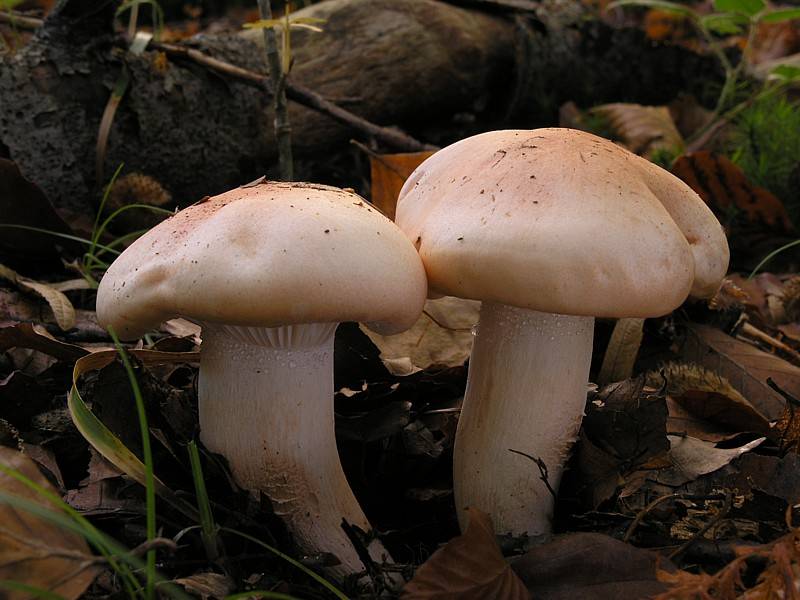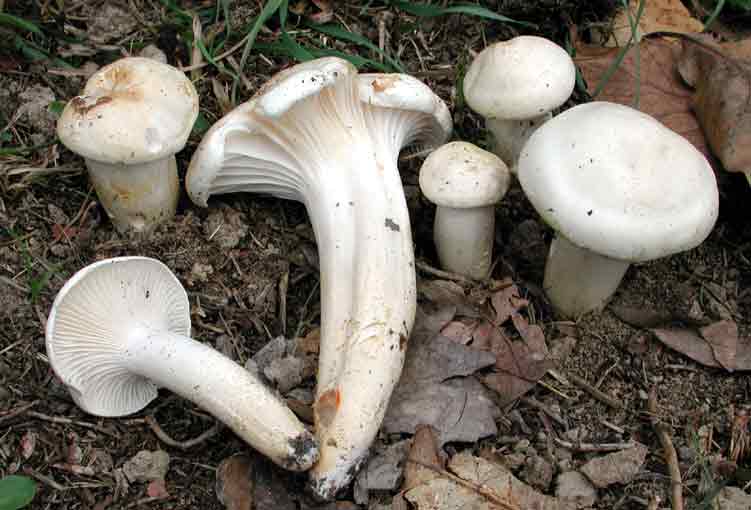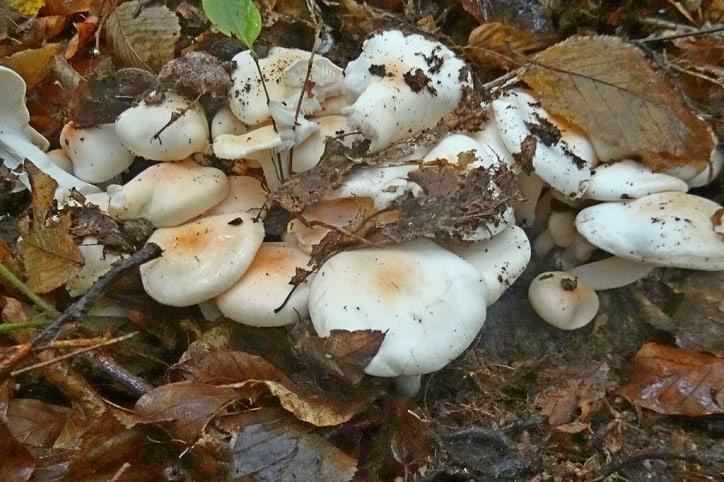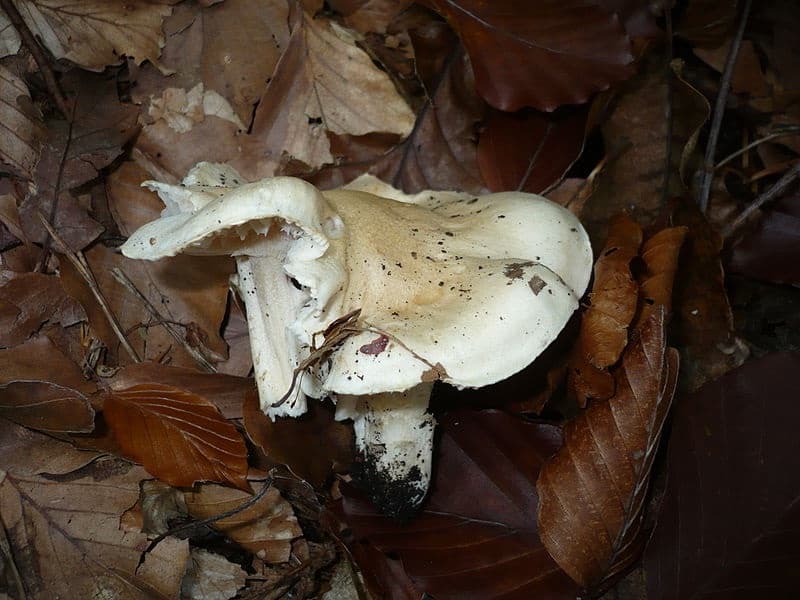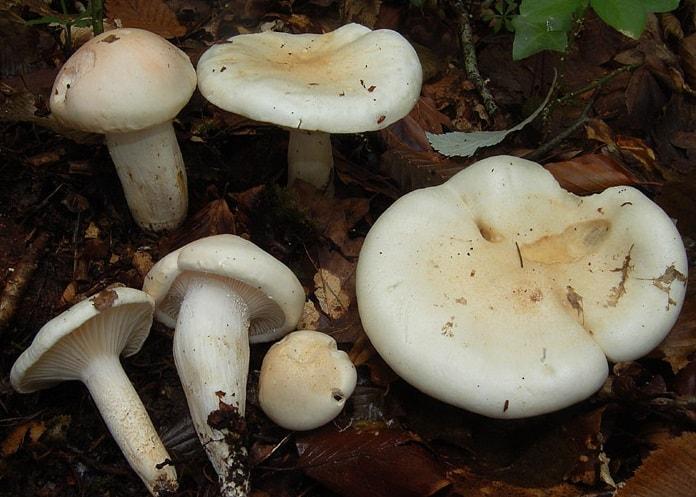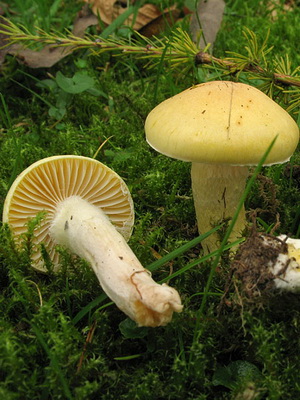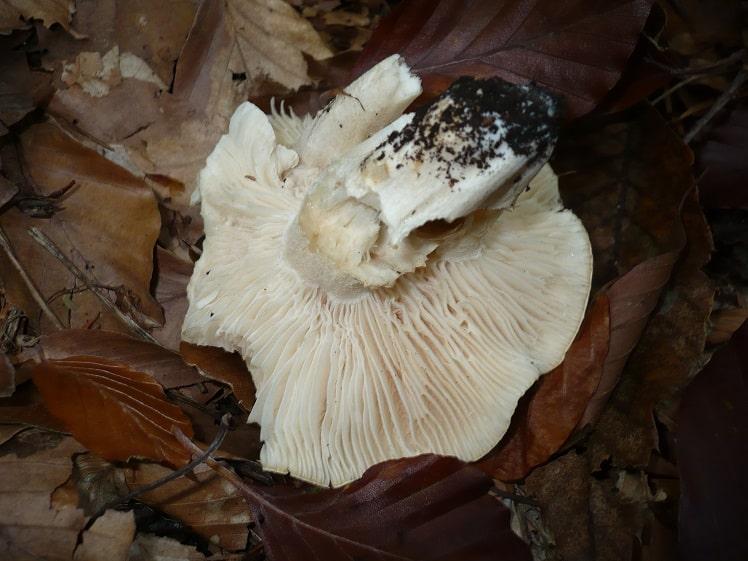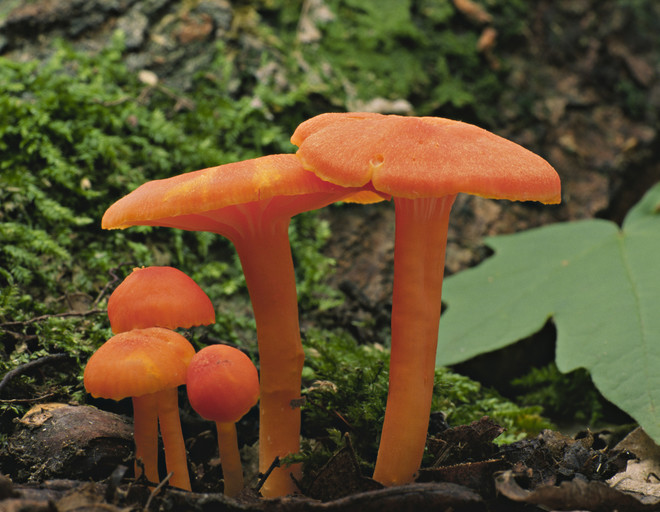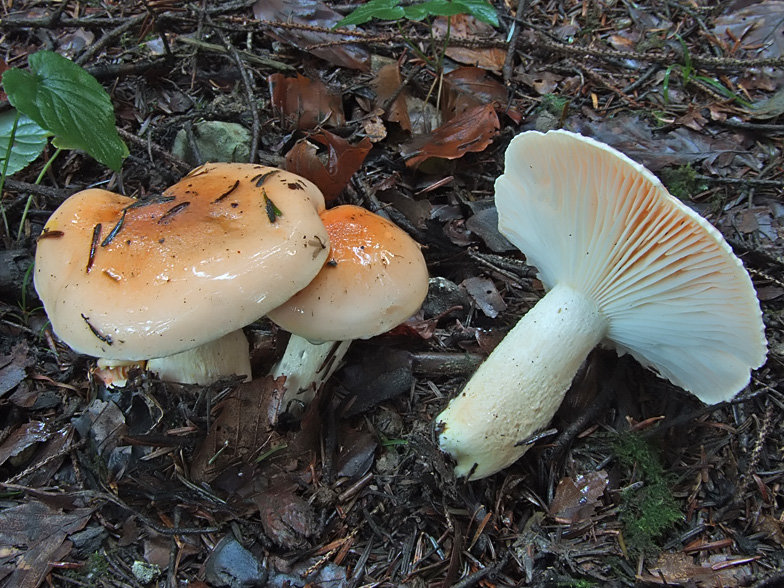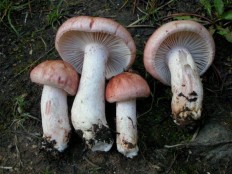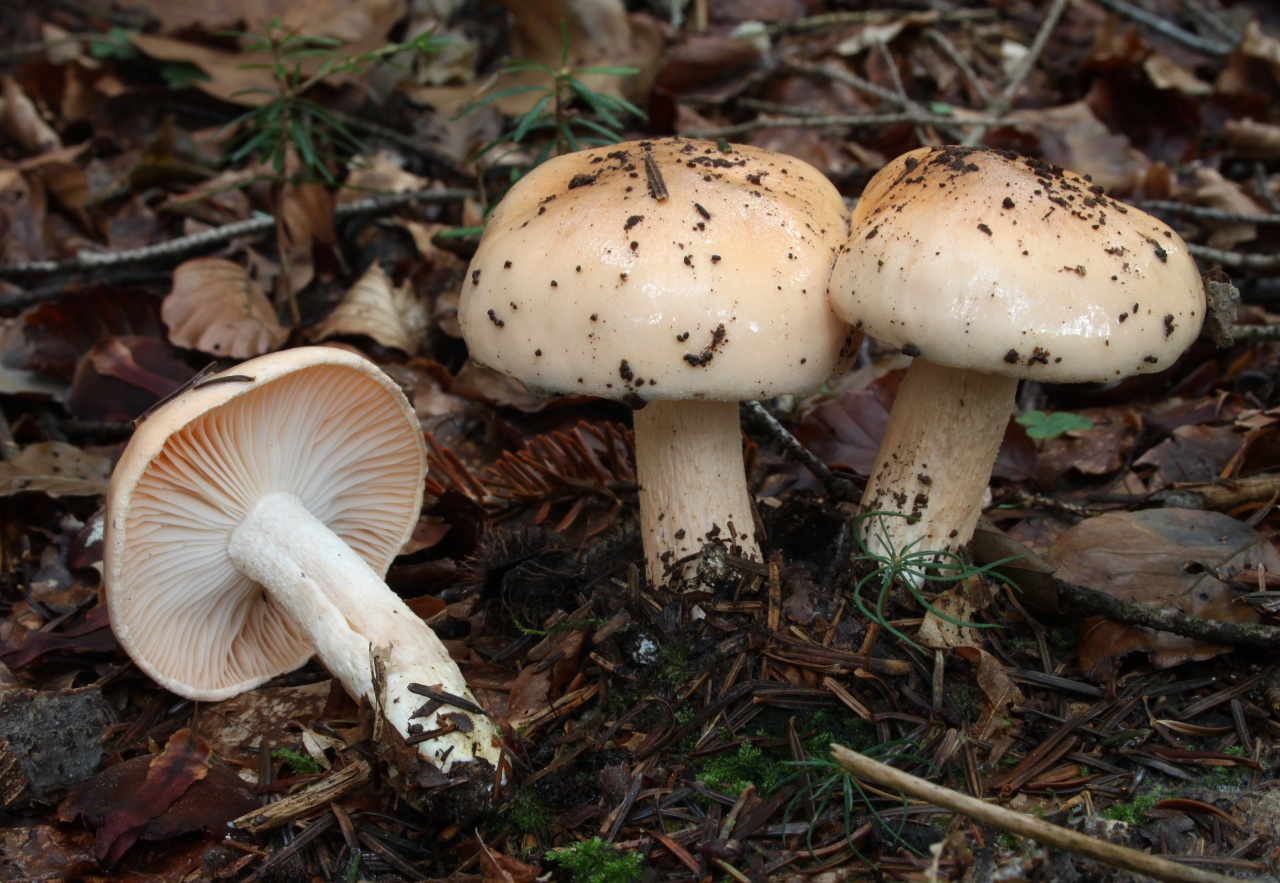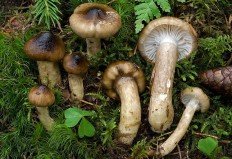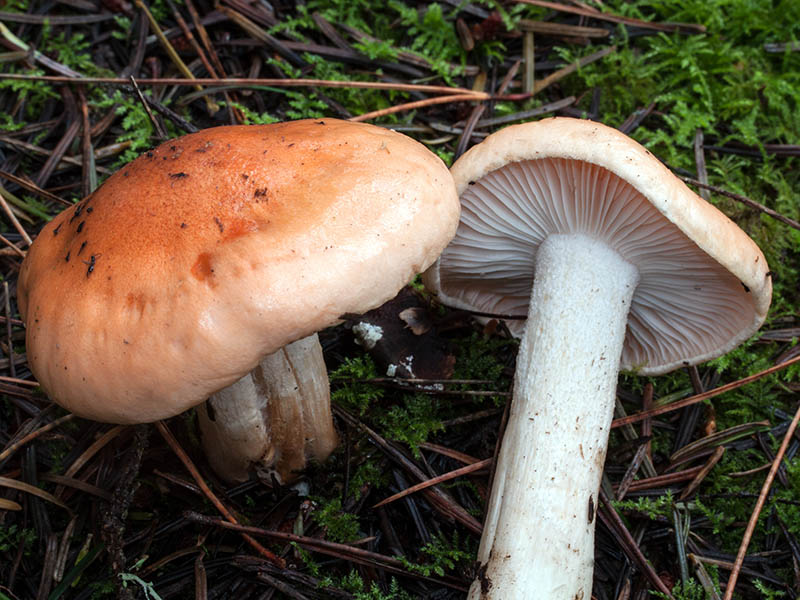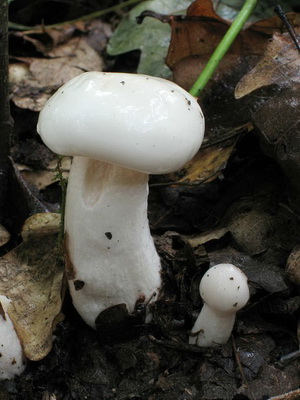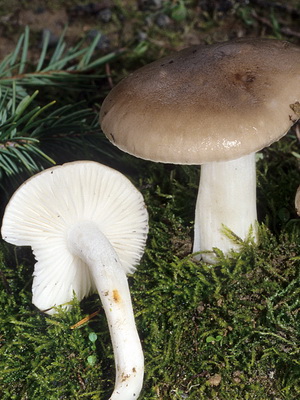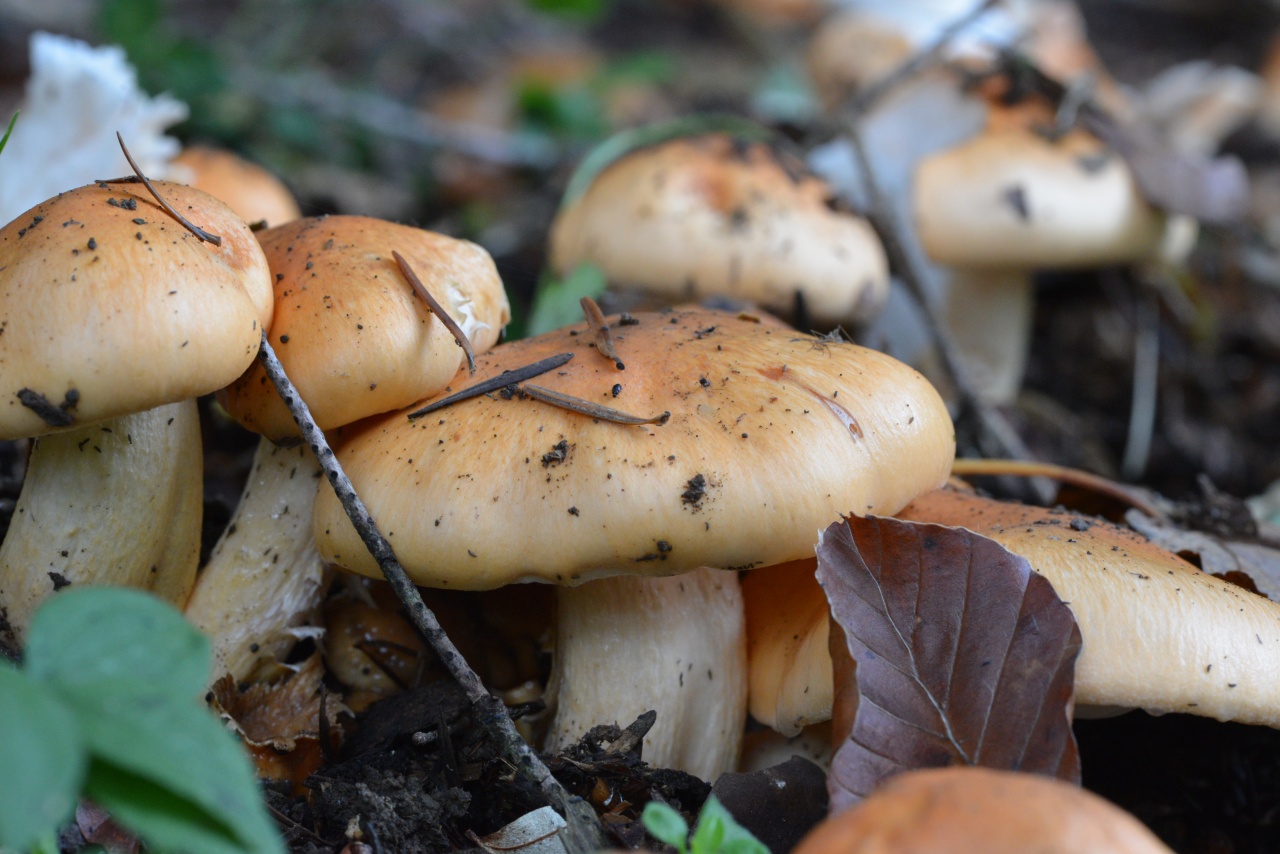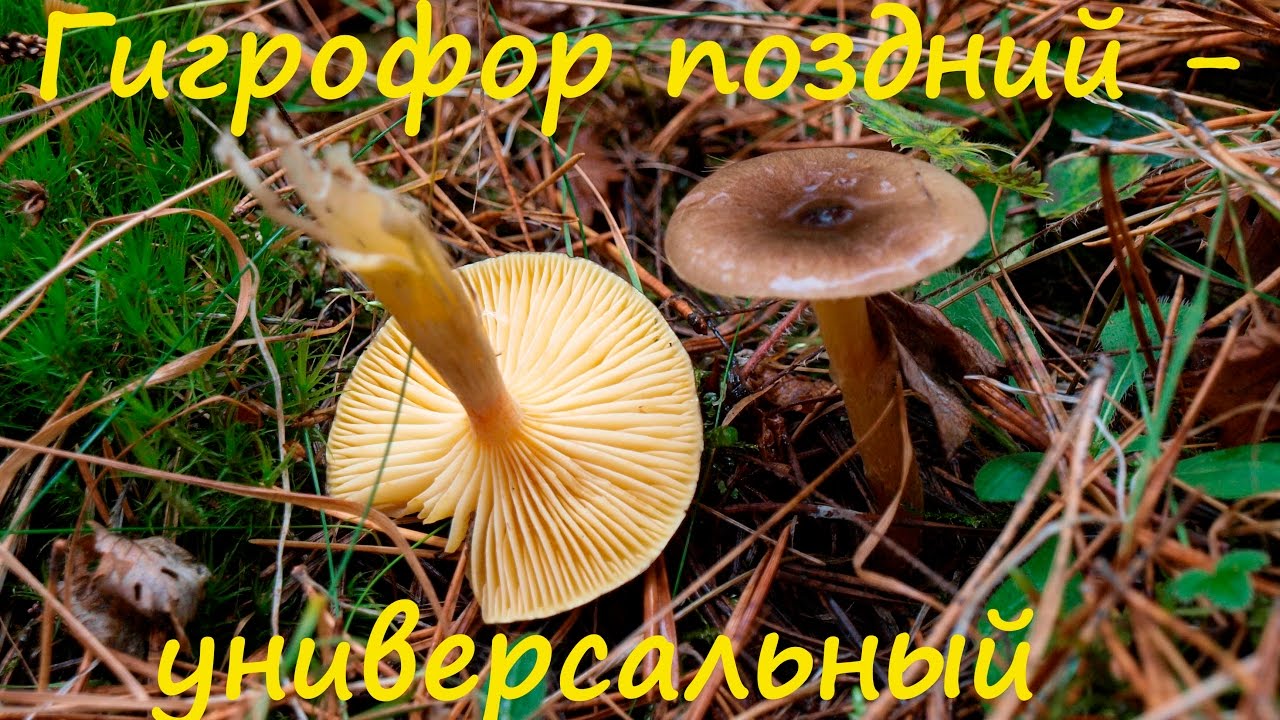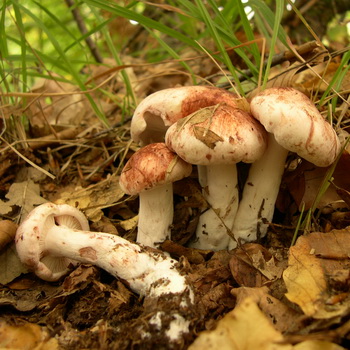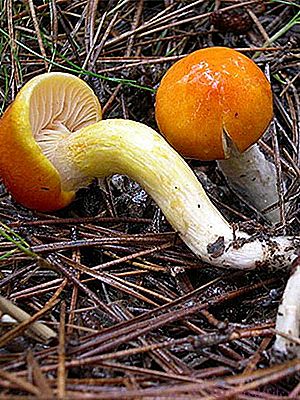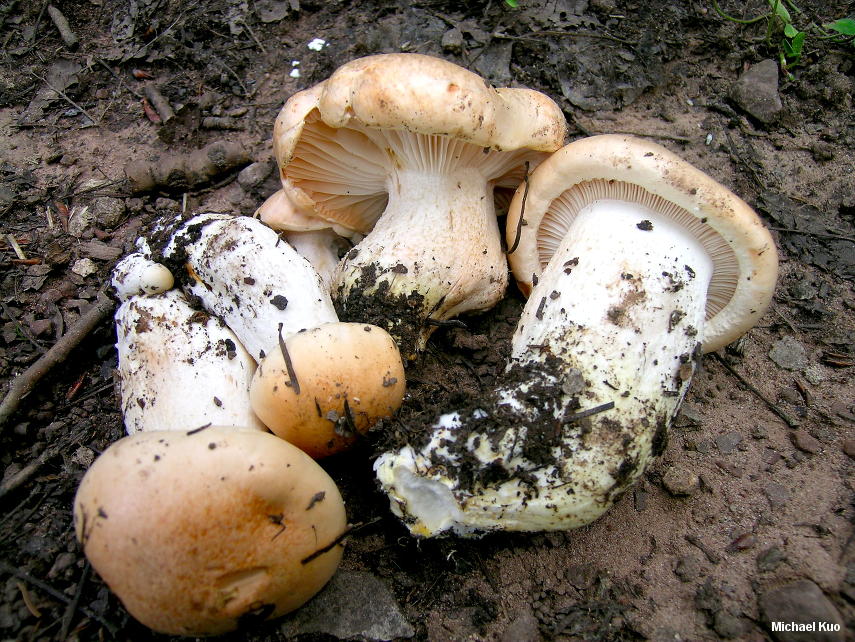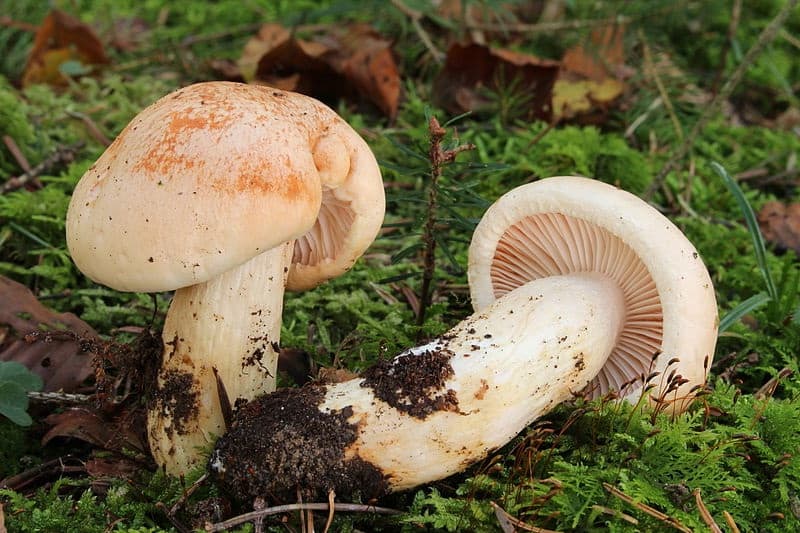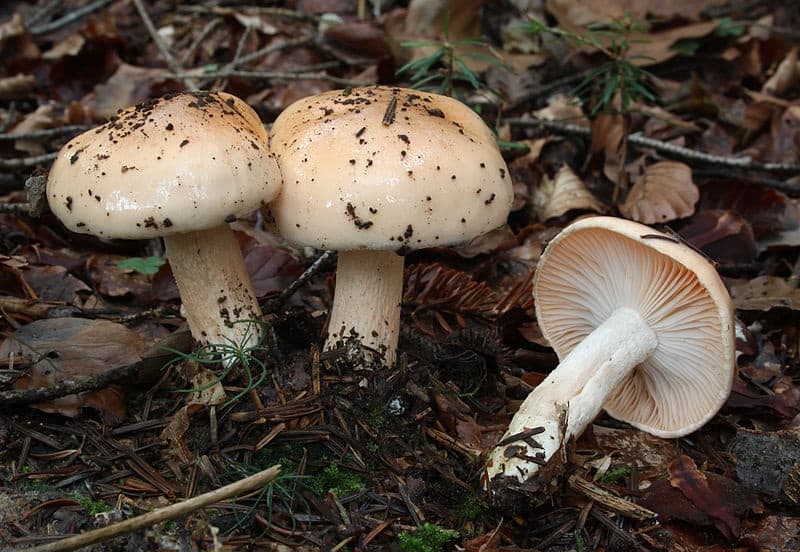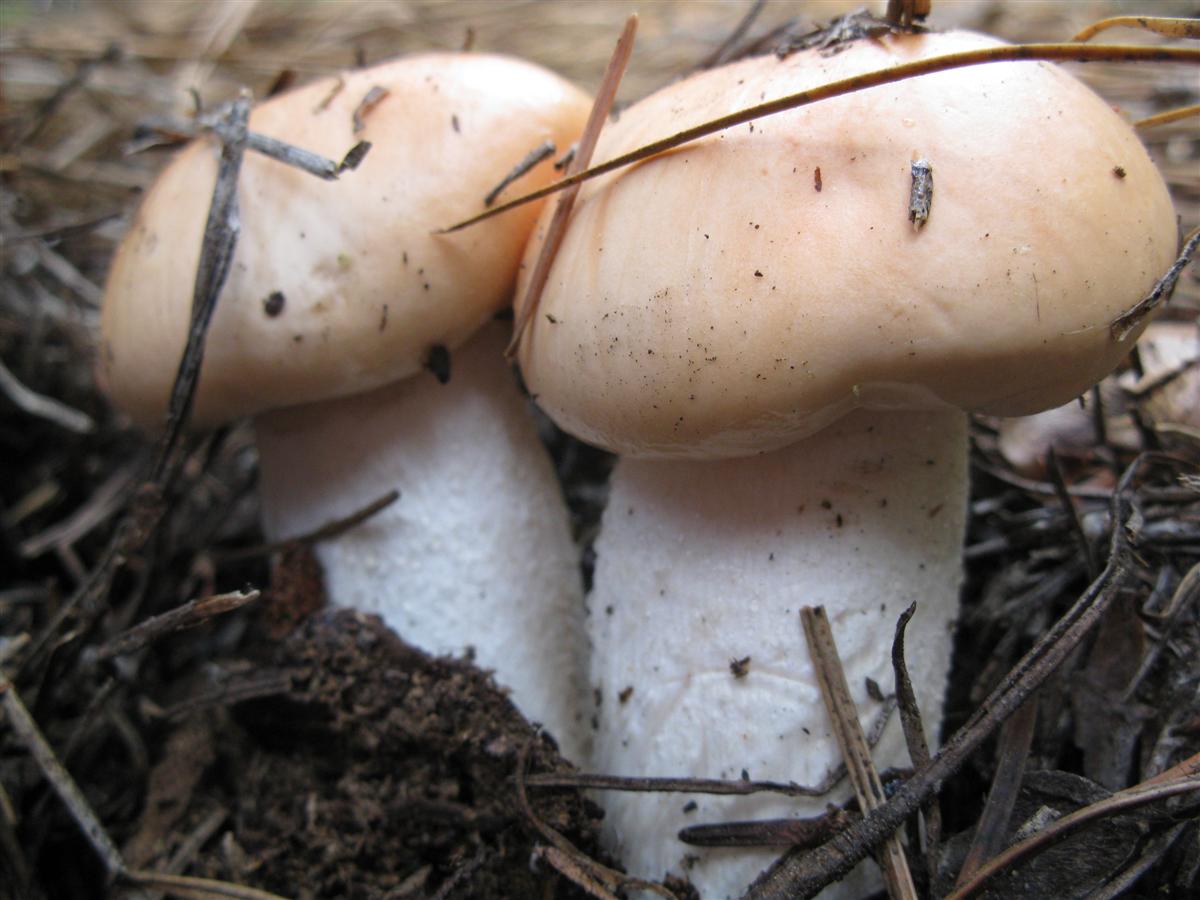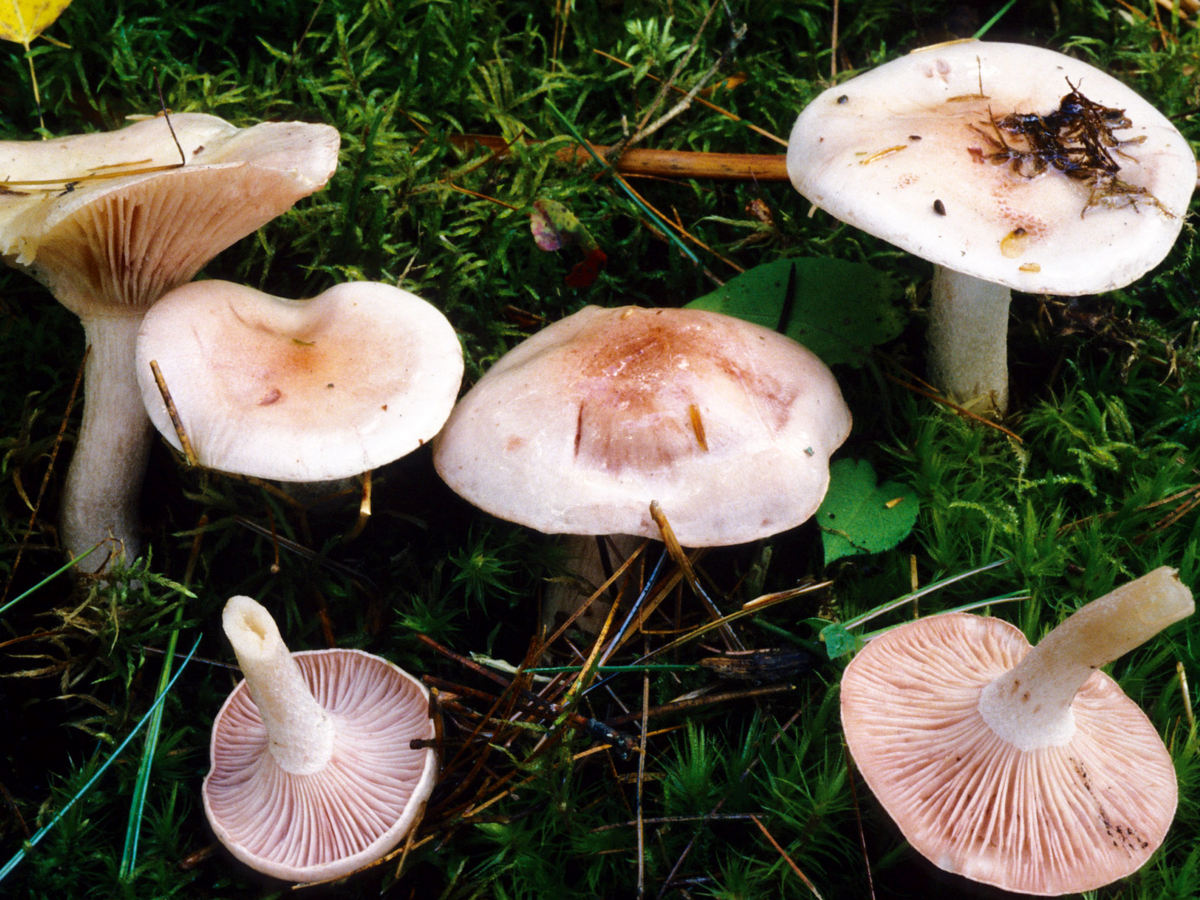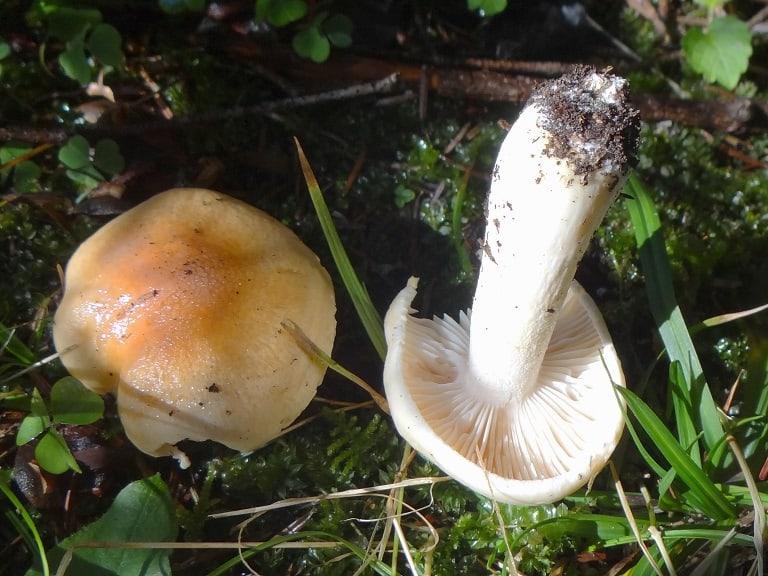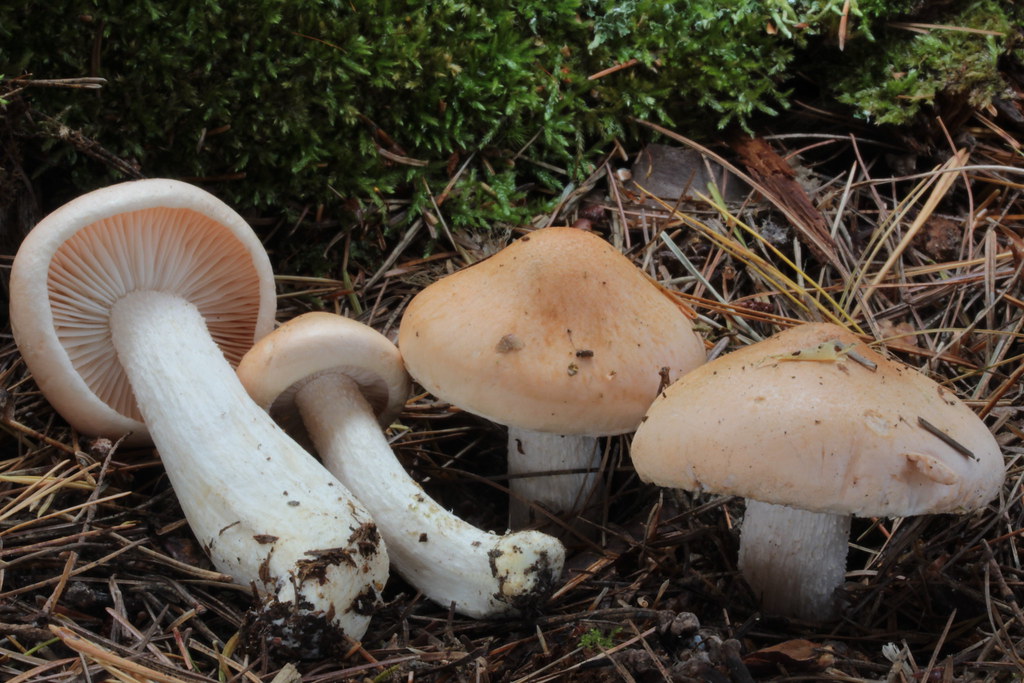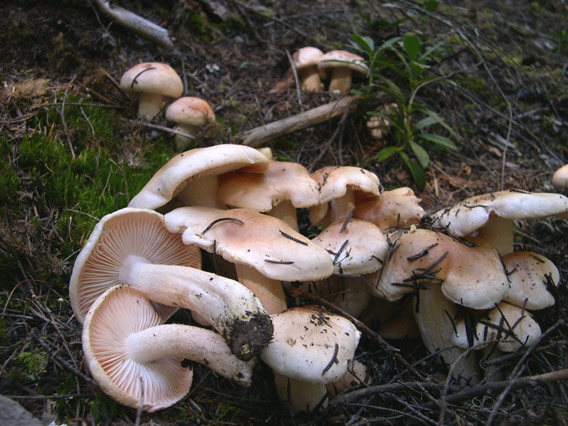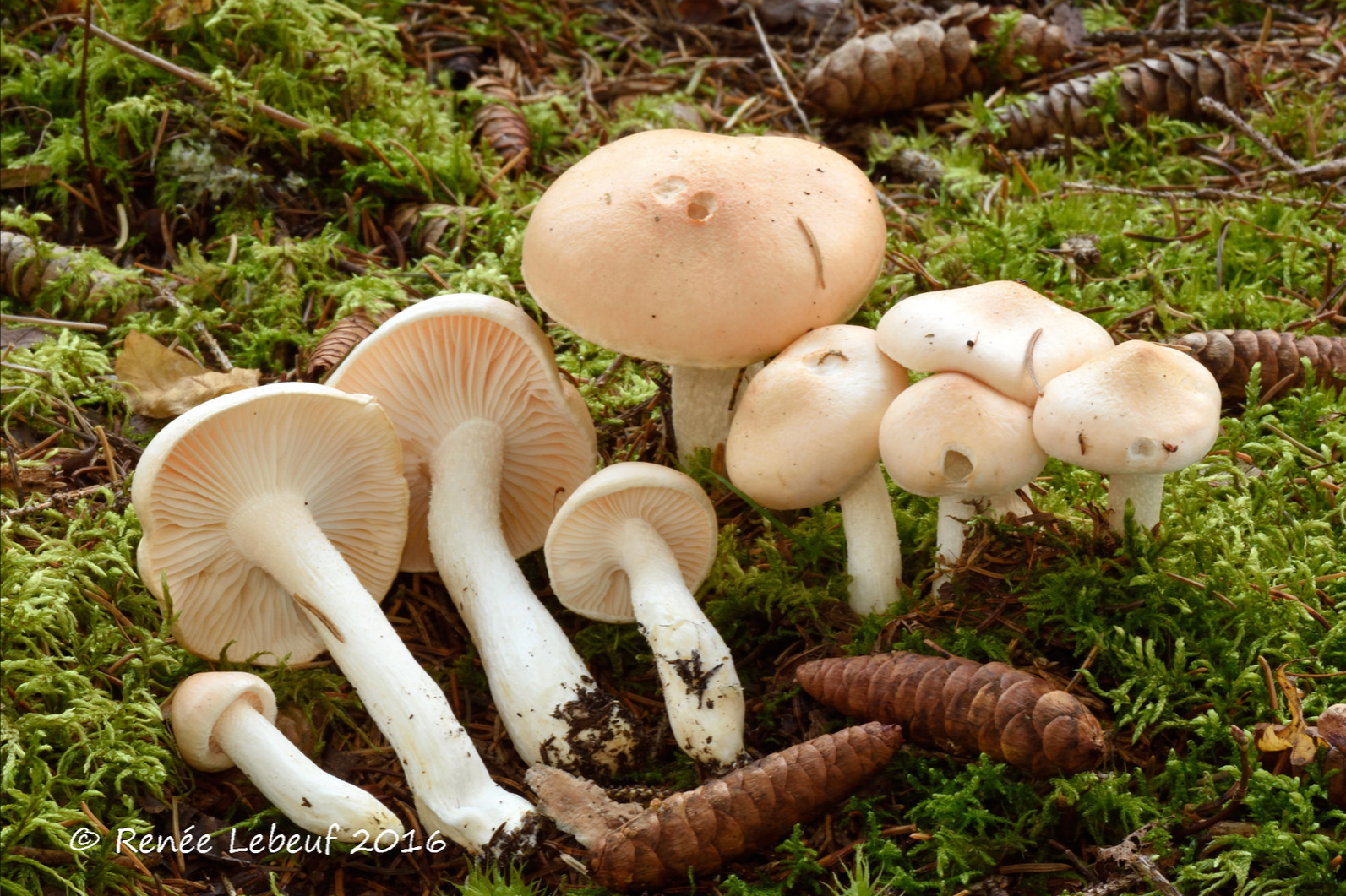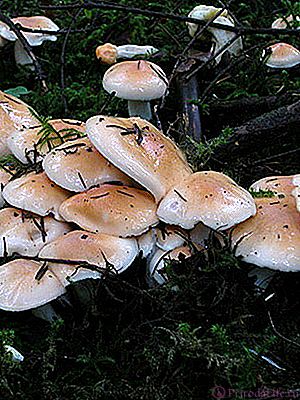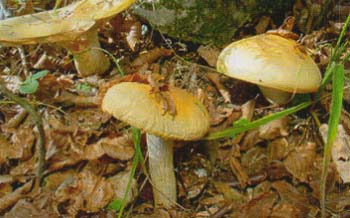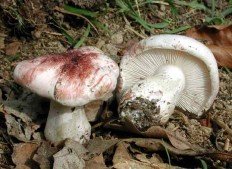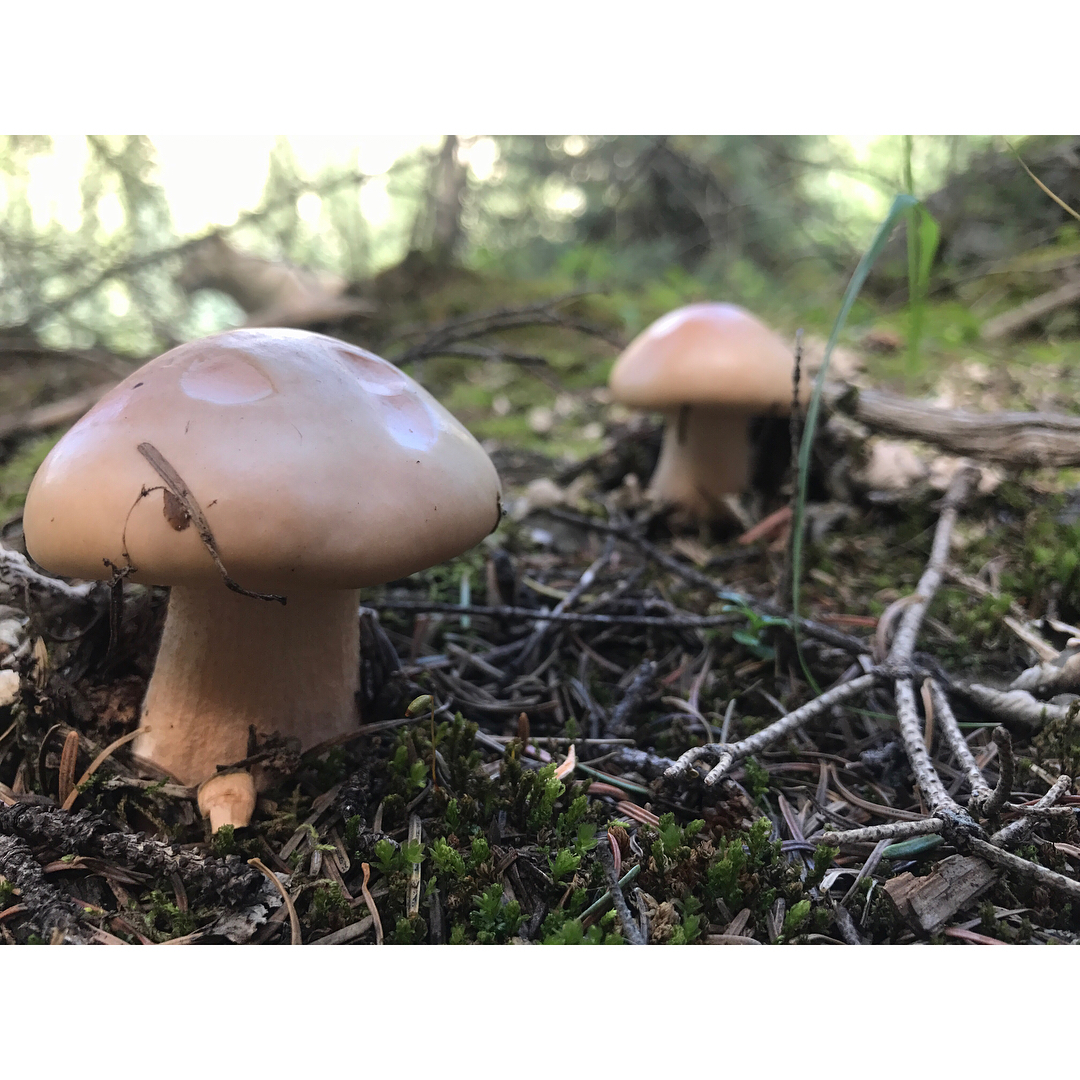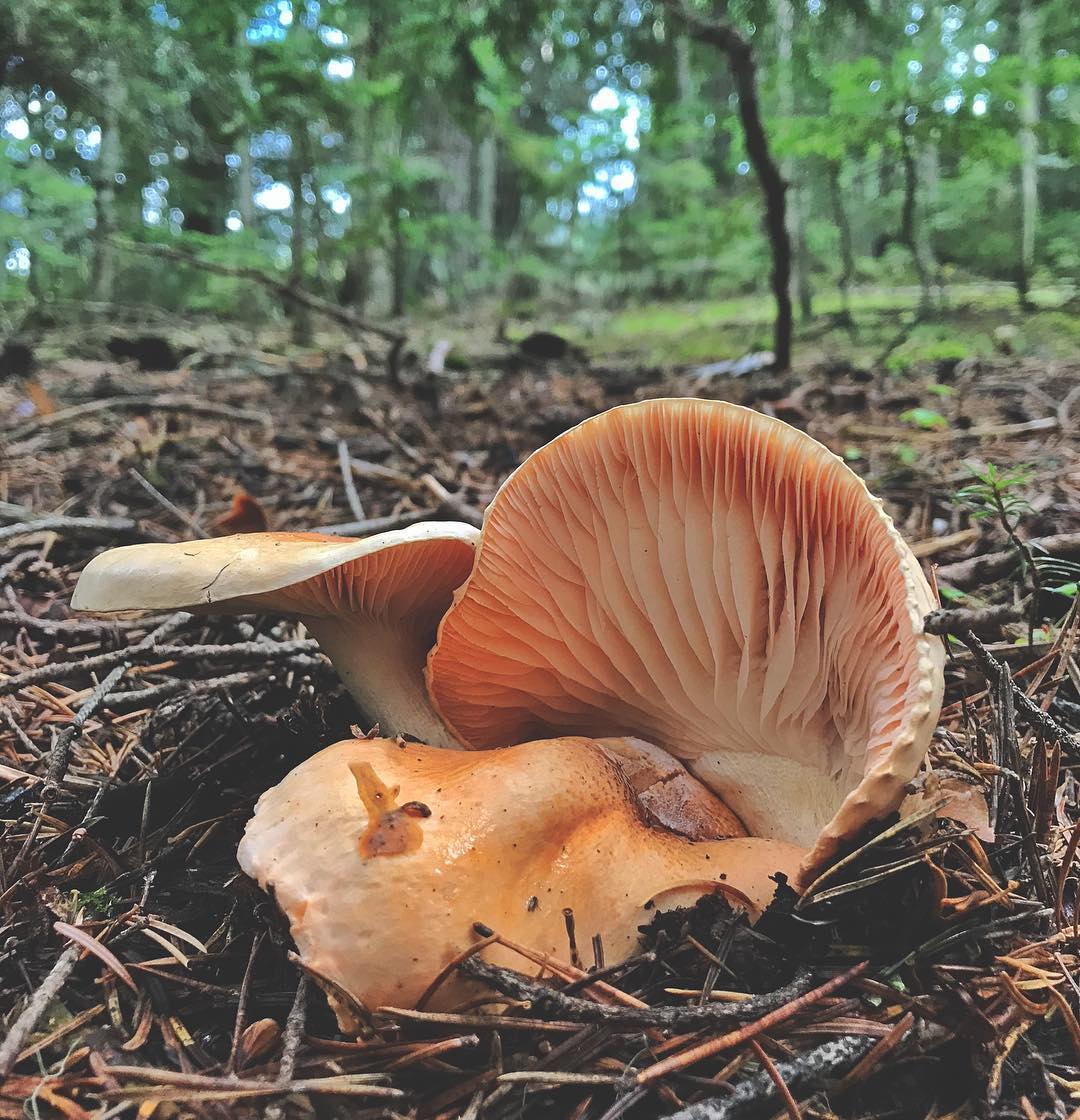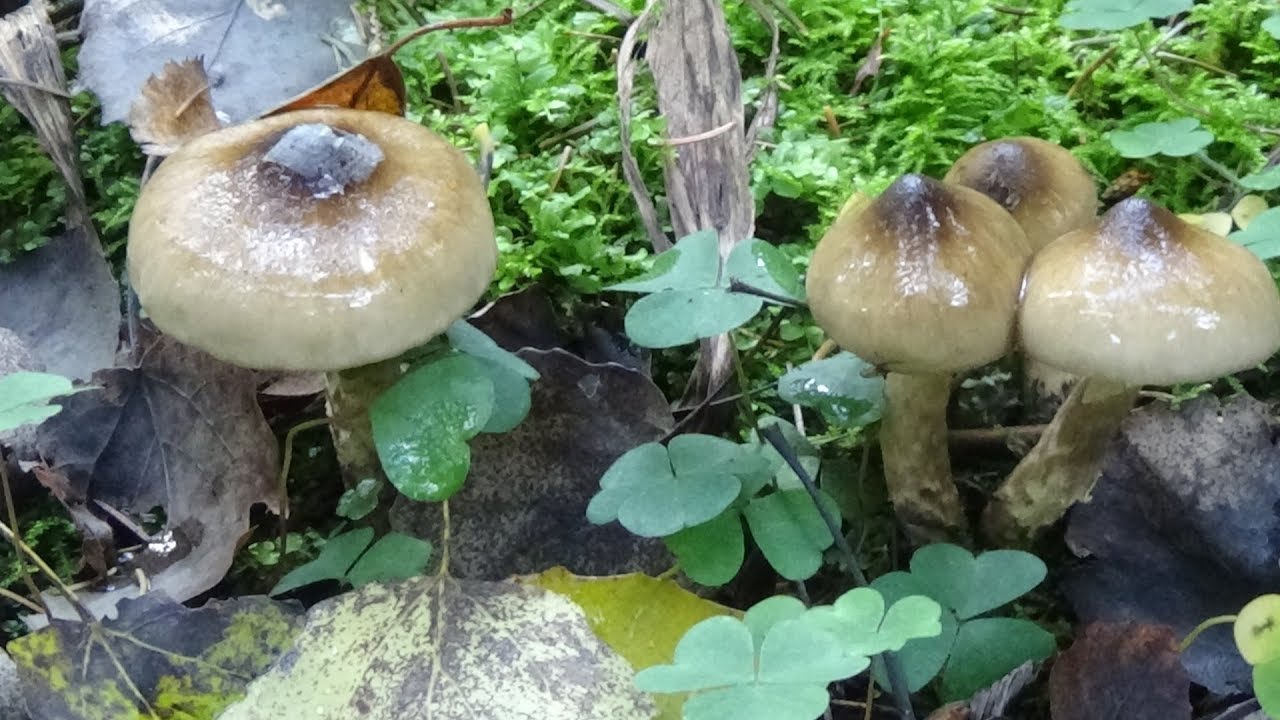Gigrofor golden edibility, where it grows, what it looks like, collection rules, photo
Gigrofor golden: is it possible to eat, description and photo
Golden Gigrofor is a lamellar mushroom of the Gigroforov family. This species grows in small groups, forming mycorrhiza with different trees. In other sources, it can be found under the name of the golden-toothed hygrophor. In scientific circles, it is listed as Hygrophorus chrysodon.
What does the golden hygrophor look like?
The fruiting body of this species is of the classical type. The hat initially has a convex bell-shaped shape with an edge concave downward. As it ripens, it straightens out, but a small tubercle remains in the center. The surface is smooth, sticky, covered with thin scales closer to the edge. In young specimens, the color of the upper part is whitish, but later it becomes golden yellow. The diameter of the cap reaches from 2 to 6 cm.
The pulp is watery, soft. It is characterized by a light shade and does not change when cut. The smell is mild, neutral.
On the reverse side of the cap there are rare wide plates descending to the pedicle. The hymenophore initially has a whitish tint, and then becomes yellow. The golden hygrophor has white elliptical spores with a smooth surface. Their size is 7.5-11 x 3.5-4.5 microns.
The leg is cylindrical, narrowed at the base, sometimes slightly curved. Its length reaches 5-6 cm, and its width is 1-2 cm. In young fruits, it is dense, and then a cavity appears. The surface is sticky, white, with a light fluff closer to the cap and yellow scales along the entire length.
Where does the golden hygrophor grow
This mushroom is common, but it grows singly or in small groups. Prefers conifers and deciduous forests with humus-rich soil. Forms mycorrhiza with oak, linden, pine. The fruiting period begins in mid-August and continues through the second decade of October inclusive.
The golden hygrophor is widespread in Europe and North America. On the territory of Russia, it is found everywhere.
Is it possible to eat a golden hygrophor
This mushroom is considered edible. But it does not possess high taste, therefore it belongs to the fourth category.
False doubles
At the initial stage of development, the gigrofor is golden in many ways similar to its relatives. Therefore, in order to avoid error, it is necessary to study the characteristic differences of twins.
- Fragrant gigrofor. It has a pronounced almond scent, and in rainy weather it can spread for several meters around. You can also distinguish it by the gray-yellow shade of the hat. This mushroom is considered conditionally edible and is characterized by a sweetish pulp taste. The official name is Hygrophorus agathosmus.
- Gigrofor is yellowish-white. The fruiting body is medium in size. The main color is white. A distinctive feature is that when rubbed, wax is felt on the fingers. The mushroom is edible, its official name is Hygrophorus eburneus.
Collection rules and use
Mushroom picking should be done with a sharp knife, cutting off the fruiting body at the base. This will prevent damage to the mycelium.
Before use, forest fruits must be cleaned of litter and soil particles. Then rinse the mushrooms thoroughly. It can be consumed fresh and processed.
Conclusion
Gigrofor golden belongs to the category of unpopular, but edible mushrooms. This is due to its poor fruiting, which makes harvesting difficult, and its neutral taste. Therefore, most mushroom pickers bypass it. Since during the fruiting period, more valuable species can be harvested.
Red Book
Are you here:
Home - The Red Book of the Leningrad Region. Plants - Gigrofor Korhonen
Gigrofor Korhonen
Hygrophorus korhonenii Harmaja (Basidiomycota. Hygrophoraceac) Status. 3 (R). Rare view.
Short description. A mushroom with lamellar fruit bodies of medium size, developing on the soil.The cap is 2-8 cm in diameter., First conical, then broadly bell-shaped, prostrate, with a rather sharp protruding tubercle: sticky or slimy, gray-brown with a black-brown center, radially dark striped. The plates are widely accrete or weakly descending, sparse, thick, white or whitish. Stem 7-12 x 0.5-2 cm at the top dry, white, very thinly pubescent, the rest of the surface is more or less weakly sticky, one color with a cap or slightly lighter, in a wet state with inconsistent zones, dry - in most cases, one color; white, later often brownish, with an annular zone. The pulp is dense, white, without any special smell or taste. Basidia up to 65 x 10 microns. Spores 10-14 x 5.2-7.5 microns. mostly narrow ellipsoidal and elongated.
Spreading. Found in env. pos. Fruit (Priozersk district) (I). In Russia, it was also recorded in Murmansk oblast, Karelia, and Irkutsk oblast. (2. 3). Outside of Russia, it is found in Northern Europe (Finland, Sweden, Norway) (4, 5).
Ecology and biology. Spruce mycorrhizal symbiont (2). Inhabits spruce forests, bears fruit in August September.
Limiting factors. Apparently, it is confined to old-growth wet spruce forests, draining and cutting down of which leads to the extinction of the species.
Security measures. Found in env. dendrological park "Otradnoe". It is necessary to expand its territory to include old-growth spruce forests and search for new locations.
Sources of information: 1. Author's data: 2. Kovalenko. 1989; 3. Petrov, 1991: 4. Nordic macromycetes. 1992; 5. Courtecuissc, Duhcm. 1995. A. E. Kovalenko
Status. 3 (R). Rare.
Description. Medium-sized gill-bearing fungus developing on soil. Cap 2-8 em in diam .. at first conical, then broadly campanulate. flattened, with prominent raiher acme umbo: v iscid or glutinous, gray brown with black brown center, radially dark-ftbrillose. Gills broadly adnate or subdecurrent, distant, thick, white or whitish. Stipe 7-12 x 0.5 2 cm, at apex dry ', white, finely pubescent, more or less slightly viscid towards the base, concolorous with the cap or slightly paler, with irregular bands when moist, mostly concolorous when dry, white, later often brownish, with annular zone. Flesh firm, white, without distinctive smell or taste. Basidia up to 65 x 10 p. Spores 10-14 x 5.27.5 pm. mostly narrowly ellipsoid and elongated.
Distribution. In the Leningrad region found in the vicinity of Plodovoye (Pyhajarvi) (Priozersk district) (I). In Russia also recorded from Murmansk region. Karelia and Irkutsk region (2.3). Outside Russia occurs in Northern Europe (Finland. Sweden. Norway) (4. 5).
Ecology and biology. Mvcorrhizal symbiont of spruce (2). In spruce forests, fruits in August - September.
Limiting factors. Apparently restricted to moist old-growth spruce forests, drainage and felling of those lead to disappearance of the species.
Conservation measures. Found close to the Otradnoye dendrological park. Expansion of its area with the inclusion of oldgrowth spruce forests and a search for new localities required.
Sources of information: I. Author's data: 2. Kovalenko. 1989; 3. Petrov. 1991; 4. Nordic macromycetes, 1992; 5. Courtecuisse. Duhcm. 1995. A.E. Kovalenko
|
18.11.2018 12:05:37
-
Menu
- home
- Photo gallery
-
Animals
- Mammals
- Birds
- Fishes
- Amphibians
- Reptiles
- Insects
- Crustaceans
- Worms
- Molluscs
-
Plants
- Angiosperms
- Gymnosperms
- Ferns
- Mosses
- Seaweed
- Lichens
- Mushrooms
- Moscow
-
Moscow region
- Mammals
- Birds
- Invertebrates
- Pisces, presm., Terrestrial.
- Plants
- Mushrooms, mosses, lichens
-
Voronezh region
- Plants
- Animals
-
Republic of Crimea
- Plants
- Animals
-
Rostov region
- Plants
- Animals
-
Krasnodar Territory
- Plants
- Animals
-
Leningrad region
- Plants
- Animals
-
Pskov region
- Plants
- Animals
-
Sverdlovsk region
- Plants
- Animals
-
Saratov region
- Mushrooms
- Bryophytes
- Ferns
- Amur region
- Krasnoyarsk Territory
- Belgorod region
-
Chelyabinsk region
- Plants
- Animals
-
IUCN Red List
- Extinct mammals
- Rare birds of the world
- Cetaceans
- Carnivores
- Reserves of Russia
- Wild animals
- Birds of Russia
- Download the Red Book
- Basic documents
- Custom sog.
- .
Description of the fragrant hygrophor.
The cap of the fragrant hygrophor is at first convex, but later transforms into a prostrate one, with a central tubercle. Its diameter is 3-7 centimeters. The cap is covered with a smooth, slimy skin. The color of the cap is grayish, yellow-gray or olive-gray. The edges of the cap are distinguished by a lighter shade; they remain wrapped inward for a long time.
There are thick and soft plates under the head. The shape of the plates can be forked. In young specimens, the plates are adherent, and in old ones they descend to the leg. At a young age, the color of the plates is whitish, and later it changes to a dirty gray. Spore powder is white.
The stem of the fragrant hygrophor is cylindrical, thickened in the lower part, sometimes flattened. Its height reaches 7 centimeters, and the girth is about 1 centimeter. The color of the leg is grayish or brown-gray.The surface of the leg is covered with small flakes resembling flakes.
The flesh of this mushroom is soft, in wet weather it becomes watery and loose. The color of the pulp is white. The pulp has a distinct almond aroma, and it tastes sweet. After the rain, a group of fragrant hygrophors emits an aroma so strong that it spreads for several meters. It is due to its smell that the fragrant hygrophor differs from other members of the family.
Places of growth of fragrant hygrophors.
Fragrant hygrophors grow in spruce forests, they can be found in damp and mossy places. These mushrooms prefer mountainous areas. Fragrant hygrophors bear fruit from summer to autumn.
Evaluation of the edibility of a fragrant hygrophor.
This type of mushroom is practically unknown, but it is suitable for eating fresh, salted and pickled.
During the preparation of fragrant hygrophors, it is necessary to remove the mucous skin, since it has an unpleasant taste and can ruin the dish. Despite this, the scented hygrophors are tender, fleshy and tasty.
Description of the reddening hygrophor
This mushroom has a classic appearance - it has a rather long stem and a domed cap. In fully matured specimens, the caps gradually open. The surface of the fruiting body is pinkish-white with small yellow spots.
Places of distribution of reddening hygrophors
Reddening hygrophors grow in coniferous or mixed forests. These mushrooms bear fruit in August-September. Hygrophors coexist with pines or spruces. Therefore, they are most often found under these trees.
Evaluation of the taste of reddening hygrophors
Reddish hygrophors are eaten by many. But they do not cause much culinary delight, since they do not have an expressive smell and special taste. These mushrooms are good as a complement to other types of mushrooms.
Relatives of the blushing hygrophors
The reddening hygrophor is outwardly most similar to the russula hygrophor. Gigrofor russula is practically the same, but has a larger size. Gigrofor russula is an edible mushroom. His hat is strong, fleshy, its shape is initially convex, and with age it becomes prostrate, sometimes a tubercle remains in the center. The skin of the cap is scaly. The leg is cylindrical, very strong. The pulp is white, in the air it turns red.
Russula hygrophors grow in deciduous forests. Find them under the oak trees. They settle in small groups. They grow in hilly and mountainous areas. Fruiting from summer to autumn.
The poetic hygrophor also looks like a reddening hygrophor, and this is also an edible mushroom. At first, the shape of the cap of the poetic hygrophor is spherical, and then it becomes prostrate. The skin is silky and shiny. The color of the cap can be light pink or whitish with a light yellow tint. The leg is dense and strong, white. The pulp of the poetic hygrophor has a jasmine aroma.
Poetic hygrophors grow in deciduous forests. They settle in groups, in mountainous terrain, under beeches. Fruiting from summer to autumn. These are delicious mushrooms that can be cooked in a variety of ways and preserved.
Gigrofor maiden is a conditionally edible mushroom. His hat is at first convex, and as it grows, it straightens out. There is often a tubercle on the surface of the cap. The leg is cylindrical, rather thin, but at the same time dense. The fruit body is white, sometimes a yellowish tint appears. If reddish spots appear on the girl's hygrophor, this means that mold has curled on the skin.
Maiden hygrophors grow in clearings, meadows, in mountainous and flat areas. They settle in numerous groups. Maiden's hygrophors bear fruit from summer to autumn. Although these are edible mushrooms, they have no special value.
Definitioner
- Basidia (Basidia)
-
Lat. Basidia. A specialized structure of sexual reproduction in fungi, inherent only in Basidiomycetes.Basidia are terminal (end) elements of hyphae of various shapes and sizes, on which spores develop exogenously (outside).
Basidia are diverse in structure and method of attachment to hyphae.
According to the position relative to the axis of the hypha, to which they are attached, three types of basidia are distinguished:
Apical basidia are formed from the terminal cell of the hypha and are located parallel to its axis.
Pleurobasidia are formed from lateral processes and are located perpendicular to the axis of the hypha, which continues to grow and can form new processes with basidia.
Subasidia are formed from a lateral process, turned perpendicular to the axis of the hypha, which, after the formation of one basidium, stops its growth.
Based on morphology:
Holobasidia - unicellular basidia, not divided by septa (see Fig. A, D.).
Phragmobasidia are divided by transverse or vertical septa, usually into four cells (see Fig. B, C).
By type of development:
Heterobasidia consists of two parts - hypobasidia and epibasidia developing from it, with or without partitions (see Fig. C, B) (see Fig. D).
Homobasidia is not divided into hypo- and epibasidia and in all cases is considered holobasidia (Fig. A).
Basidia is the place of karyogamy, meiosis and the formation of basidiospores. Homobasidia, as a rule, is not functionally divided, and meiosis follows karyogamy in it. However, basidia can be divided into probasidia - the site of karyogamy and metabasidia - the site of meiosis. Probasidium is often a dormant spore, for example in rust fungi. In such cases, probazidia grows with metabasidia, in which meiosis occurs and on which basidiospores are formed (see Fig. E).
See Karyogamy, Meiosis, Gifa.
- Pileipellis
-
Lat. Pileipellis, skin - differentiated surface layer of the cap of agaricoid basidiomycetes. The structure of the skin in most cases differs from the inner flesh of the cap and may have a different structure. The structural features of pileipellis are often used as diagnostic features in descriptions of fungi species.
According to their structure, they are divided into four main types: cutis, trichoderma, hymeniderma and epithelium.
See Agaricoid fungi, Basidiomycete, Cutis, Trichoderma, Gimeniderm, Epithelium.
- Pileipellis (Pileipellis)
-
Lat. Pileipellis, skin - differentiated surface layer of the cap of agaricoid basidiomycetes. The structure of the skin in most cases differs from the inner flesh of the cap and may have a different structure. The structural features of pileipellis are often used as diagnostic features in descriptions of fungi species.
According to their structure, they are divided into four main types: cutis, trichoderma, hymeniderma and epithelium.
See Agaricoid fungi, Basidiomycete, Cutis, Trichoderma, Gimeniderm, Epithelium.
- Ixotrihoderma
-
Trichoderma, consisting of hyphae immersed in mucus. The surface of the cap is oily, slippery or slimy.
Lat. Ixotrichoderm.
See Trichoderma, Gifa.
- Ixokutis
-
Cutis, consisting of hyphae immersed in mucus. The surface of the cap is oily, slippery or slimy.
Lat. Ixocutis.
See Cutis, Gifa.
Edible types of hygrophors
About four dozen species belong to the genus Hydrophorus, many of which are edible, tasty and useful for the human body.
Early Gigrofor
Hygr.mаrzuolus is an early edible species also known as the March or snow mushroom. Forms a thick, fleshy, centrally located or eccentric cap, convex or flat, rarely slightly depressed. The superficial part with a very uneven curvature and wavy edges, covered with smooth and dry, with a slight fibrous pubescence, with a light gray, whitish, lead-gray or blackish skin with numerous spots.
Edible and quite dense in consistency, the pulp has a white or slightly grayish tint, a weak and pleasant mushroom aroma. Solid leg of a shortened type, rather thick, irregularly cylindrical or slightly curved, often with a thinning in the lower part.The coloration of the leg is white or grayish.
Brown
The edible species is also known as the late hygrophor with a classic cap of olive-brown or brownish-brown color, slightly convex in shape with slightly curled inward edges. The superficial part with a slimy coating, lighter edges and a dark colored central part.
The stem is cylindrical in shape, with a yellowish or olive coloration. Young specimens have a special ring that disappears with age. The classic type is yellow or light orange, relatively sparsely located, but thick plates. The soft part is fragile, without a pronounced mushroom smell.


